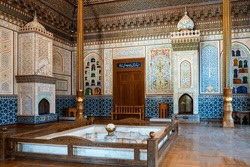Applied Art
- portiaibe
- Sep 16, 2023
- 2 min read
Updated: Sep 18, 2023
Applied Art
Applied arts are all the arts that use design and decoration on essentially practical objects to make them aesthetically pleasing. Applied art has been an integral part of human civilization for centuries, encompassing a wide range of artistic disciplines aimed at creating functional and aesthetically pleasing objects. Its history is a narrative of innovation, skill, and the changing dynamics between art and utility.
Since the dawn of civilizations, skilled artists and craftsmen have created objects that not only fulfilled functional needs but also displayed exceptional aesthetic talent. Ancient civilizations like the Egyptians, Greeks, and Romans decorated commonplace objects like pottery, jewelry, and textiles, with elaborate designs and motifs.
During the Medieval and Renaissance periods, skilled craftsmen played a pivotal role in creating exquisite works of applied art. Manuscripts were illuminated with intricate illustrations; stained glass windows adorned cathedrals; and sumptuous tapestries decorated palaces.
The Industrial Revolution in the 18th and 19th centuries revolutionized applied art by introducing mass production techniques. This era witnessed the design and production of decorative objects, furniture, ceramics, and textiles on a scale previously unimaginable, making these items more accessible to a wider audience.
The late 19th and early 20th centuries saw the emergence of the Art Nouveau movement, which emphasized the fusion of art and design and was characterized by flowing organic forms in architecture, furniture, and decorative arts.
In response to the industrialization of art, the Arts and Crafts movement, led by figures like William Morris, championed the value of traditional craftsmanship. This movement promoted handmade, well-crafted objects in various applied arts, including furniture, ceramics, and textiles.
The Bauhaus school, founded in the early 20th century in Germany, marked another significant milestone in the history of applied art. It sought to integrate art, craft, and technology, leading to innovative designs in architecture, furniture, and industrial products.
Today, applied art continues to evolve, encompassing diverse disciplines such as graphic design, fashion design, product design, and interior design. Contemporary designers draw inspiration from historical movements while embracing new materials and technologies.
Applied art remains a testament to human creativity and ingenuity, shaping the objects and spaces that surround us and reflecting the cultural, technological, and artistic developments of each era.






Comments